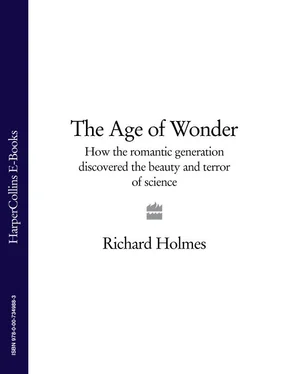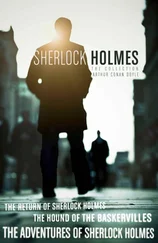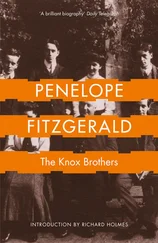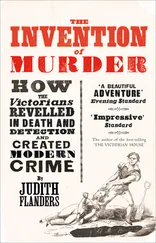In November Banks wrote a friendly and characteristically droll letter to Herschel, asking him for details of how he made the discovery that famous night, and all the difficulties ‘etc etc’ it caused him. He wanted to refer to these when presenting him to the assembled members of the Royal Society in London the following month: ‘Sir, The Council of the Royal Society have ordered their Annual Prize Medal to be presented to you in reward for your discovery of the new star. I must request that (as it is usual for me on that occasion to say something in commendation of the discovery) you will furnish me with such anecdotes of the difficulties you experienced etc etc…as you may think proper to assist me in giving due praise to your industry and ability.’
Banks, in high good humour, also enjoyed putting Herschel on his mettle. ‘ Some of our astronomers here incline to the opinion that it is a Planet, and not a Comet. If you are of that opinion, it should forthwith be provided with a name, or our nimble neighbours, the French, will certainly save us the trouble of Baptizing it.’ 128
Herschel, again advised by Watson, asked Banks if he could name the planet after the King, ‘Georgium Sidus’, a sound and self-effacing diplomatic stroke from a fellow Hanoverian. 129 But he was less easy about the continuing murmurs in some quarters of the Royal Society that his discovery had been in some sense ‘accidental’. This struck at his very notion of scientific method. He wrote insistently, even angrily, to Banks just before the ceremony on 19 November: ‘The new star could not have been found out even with the best telescopes had I not undertaken to examine every star in the heavens including such as are telescopic, to the amount of at least 8 or 10 thousand. I found it at the end of my second review after a number of observations…The discovery cannot be said to be owing to chance only it being almost impossible that such a star should escape my notice…The first moment I directed my telescope to the new star, I saw with a power of 227 that it differed sufficiently from other celestial bodies; and when I put on the higher powers of 460 and 932 was quite convinced it was not a fixt star.’ 130
This claim was to become a point of honour with Herschel, often repeated. In September 1782 he wrote to Lalande in Paris, stating emphatically that the discovery ‘was not owing to chance’. Since he was embarked on a regular review of the sky, ‘it must sooner or later fall into my way, and as it was that day the turn of the stars in that neighbourhood to be examined, I could not very well overlook it’. 131 The following year he wrote to the German astronomer Georg Christoph Lichtenberg at Göttingen, repeating that it was ‘not by accident’, and adding: ‘when I came to Astronomy as a branch of [mathematics] I resolved to take nothing upon trust but see with my own eyes all what other men had seen before’. 132 Lichtenberg replied enthusiastically (in German): ‘ Mein Gott! If I had only known, when I was for a few days in Bath in October 1775, that such a man lived there! As I am no friend of tea rooms, nor of cards or balls, I was much ennuyéd and spent my time at the top of the [cathedral] tower with a field glass…’
When he came to write an autobiographic sketch for his friend Dr Hutton in 1809, Herschel was more insistent than ever: ‘It has generally been supposed that it was a lucky accident which brought this star to my view; this is an evident mistake. In the regular manner I examined every star of the heavens, not only of that magnitude but many far inferior, it was that night its turn to be discovered. I had gradually perused the great Volume of the Author of Nature and was now come to the seventh Planet. Had business prevented me that evening, I must have found it the next, and the goodness of my telescope was such that I perceived its planetary disk as soon as I looked at it; and by application of my micrometer, I determined its motion in a few hours.’ 133
This claim is not entirely borne out by his original Observation Journal. His first sweep or ‘review’ of double stars, begun in 1779, had not revealed the Georgium Sidus, so discovery on the second was not inevitable. Nor was recognition instant when it came. The journal reveals no precise Eureka ‘first moment’ on 13 March, only the hardening suspicion drawn out over five days to Saturday, 17 March that the strange body had ‘proper motion’, but was neither a ‘nebulous star’ nor a ‘comet’, and so was very probably a new planet. But it was Nevil Maskelyne who was the first to say so explicitly in writing, in April.
Nevertheless, Herschel’s discovery was an astonishing feat. It became his professional signature, and a historic moment for cosmology. It is hardly surprising that over the years he continued romantically to refine the story, and compressed his discovery into a single wondrous night, the inspired work of a glorious ‘few hours’. Caroline never commented on this, although it seems clear that she was present during the critical nights of measuring between 21 March and 6 April 1781. The effect of this account was to present an engagingly romantic image of science at work: the solitary man of genius pursuing the mysterious moment of revelation.
Joseph Banks’s presentation speech, when awarding the prestigious Copley Gold Medal for the best work in any scientific field during the year 1781, in front of the assembled Fellows of the Royal Society, was unreservedly complimentary to Herschel. The discovery of the new planet was the first great success of Banks’s new presidency. In his most expansive and jovial mood, he accordingly projected a visionary future for Herschel’s astronomy: ‘Your attention to the improvement of telescopes has already amply repaid the labour which you bestowed upon them; but the treasures of heaven are well known to be inexhaustible. Who can say but your new star, which exceeds Saturn in its distance from the sun, may exceed him as much in magnificence of attendance? Who can say what new rings, new satellites, or what other nameless and numberless phenomena remain behind, waiting to reward future industry?’ 134
The award set the seal on Herschel’s reputation, and reignited the general fascination with astronomy. The discovery of the seventh planet began a revolution in the popular conception of cosmology. It was widely reported in the gazettes, journals and year books published in London, Paris and Berlin at the end of 1782. Yet although all orreries were instantly out of date, it took some time for Uranus to enter into the popular imagery and iconography of the solar system.
One of the best of the new wave of popular astronomy books was John Bonnycastle’s Introduction to Astronomy in Letters to his Pupil, which first appeared in 1786 (and went on to new expanded editions in 1788, 1811 and 1822). Bonnycastle gave the discovery of Uranus its own chapter: ‘Of all the discoveries in this science, none will be thought more singular than that which has lately been made by Dr Herschell…This is a Primary Planet belonging to the solar system, which till 13th of March 1781, when it was first seen by Dr Herschell, had escaped the observation of every other astronomer, both ancient and modern…’ Yet he still treated it as a puzzling novelty, its significance yet to be developed. ‘This discovery, which at first appears more curious than useful, may yet be of great service to astronomy…and may produce many new discoveries in the celestial regions, by which our knowledge of the heavenly bodies, and of the immutable laws that govern the universe, will become much more extended: which is the great object of the science…‘ 135
Bonnycastle’s book was a thoroughly Romantic production, which included a good deal of ‘illustrative’ cosmological poetry from Milton, Dryden and Young. It also sported an engraved frontispiece by Henry Fuseli. This showed the goddess of astronomy, Urania, in a diaphanous observation-dress, pointing seductively to her new star while instructing a youthful male pupil. The publisher was Joseph Johnson of St Paul’s Churchyard, also the publisher of William Blake, William Godwin and Mary Wollstonecraft; and later of Wordsworth and Coleridge.
Читать дальше












